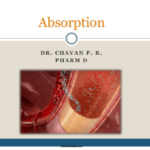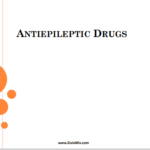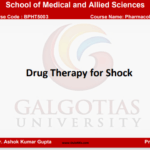www.DuloMix.com
GUJARAT TECHNOLOGICAL UNIVERSITY
M.Pharm
SEMESTER: I
Subject Name: MODERN PHARMACEUTICAL ANALYTICAL TECHNIQUES
Subject Code: MAT101T
Scope: This subject deals with various advanced analytical instrumental techniques for identification,
characterization and quantification of drugs. Instruments dealt are NMR, Mass spectrometer, IR,
HPLC, GC etc..
Objectives: Upon completion of this course the student should be able to
1. Chemicals and Excipients
2. The analysis of various drugs in single and combination dosage forms
3. Theoretical and practical skills of the instruments
Sr No Course Contents Total Hrs
1 UV-Visible spectroscopy: Introduction, Theory, Laws, Instrumentation 11
associated with UV-Visible spectroscopy, Choice of solvents and solvent
effect and Applications of UVVisible Spectroscopy
IR spectroscopy: Theory, Modes of Molecular vibrations, Sample
handling, Instrumentation of Dispersive and Fourier – Transform IR
Spectrometer, Factors affecting vibrational frequencies and Applications of
IR spectroscopy
Spectroflourimetry: Theory of Fluorescence, Factors affecting
fluorescence, Quenchers, Instrumentation and Applications of fluorescence
spectrophotometer
Flame emission spectroscopy and Atomic absorption spectroscopy:
Principle, Instrumentation, Interferences and Applications
2 NMR spectroscopy: Quantum numbers and their role in NMR, Principle, 10
Instrumentation, Solvent requirement in NMR, Relaxation process, NMR
signals in various compounds,Chemical shift, Factors influencing chemical
shift, Spin-Spin coupling, Coupling constant, Nuclear magnetic double
resonance, Brief outline of principles of FT-NMR and 13C NMR.
Applications of NMR spectroscopy
3 Mass Spectroscopy: Principle, Theory, Instrumentation of Mass 10
Spectroscopy, Different types of ionization like electron impact, chemical,
field, FAB and MALDI, APCI, ESI, APPI Analyzers of Quadrupole and
Time of Flight, Mass fragmentation and its rules, Meta stable ions, Isotopic
peaks and Applications of Mass Spectroscopy
4 Chromatography: Principle, apparatus, instrumentation, chromatographic 11
parameters, factors affecting resolution and applications of the following:
a) Paper chromatography b) Thin Layer chromatography c) Ion exchange
chromatography d) Column chromatography e) Gas chromatography f)
High Performance Liquid chromatography g) Affinity chromatography
5 a. Electrophoresis: Principle, Instrumentation, Working conditions, factors 9
affecting separation and applications of the following:
a) Paper electrophoresis b) Gel electrophoresis c) Capillary electrophoresis
d) Zone electrophoresis e) Moving boundary electrophoresis f) Iso electric
focusing
b. X ray Crystallography: Production of X rays, Different X ray
diffraction methods, Bragg‘s law, Rotating crystal technique, X ray powder
technique, Types of crystals and applications of Xray diffraction.
www.DuloMix.com
6 Potentiometry: Principle, thermal transitions and instrumentation (heat flux 9
and power compensation anddesigns) working, Ion selective Electrodes and
Application of potentiometry.
Thermal Analysis: Polymer behavior, factors affecting and
instrumentation, and working, application of TGA
REFERENCES:
1. Spectrometric Identification of Organic compounds – Robert M Silverstein, Sixth edition,
John Wiley & Sons, 2004.
2. Principles of Instrumental Analysis – Doglas A Skoog, F. James Holler, Timothy A. Nieman,
5th edition, Eastern press, Bangalore, 1998.
3. Instrumental methods of analysis – Willards, 7th edition, CBS publishers.
4. Practical Pharmaceutical Chemistry – Beckett and Stenlake, Vol II, 4th edition, CBS
Publishers, New Delhi, 1997.
5. Organic Spectroscopy – William Kemp, 3rd edition, ELBS, 1991.
6. Quantitative Analysis of Drugs in Pharmaceutical formulation – P D Sethi, 3rd Edition, CBS
Publishers, New Delhi, 1997.
7. Pharmaceutical Analysis- Modern methods – Part B – J W Munson, Volume 11, Marcel
Dekker Series
www.DuloMix.com
GUJARAT TECHNOLOGICAL UNIVERSITY
M.Pharm
PHARMACEUTICS
SEMESTER: I
Subject Name: DRUG DELIVERY SYSTEMS
Subject Code: MPH102T
SCOPE: This course is designed to impart knowledge on the area of advances in novel drug delivery
systems
OBJECTIVES: Upon completion of the course, student shall be able to understand
1. The various approaches for development of novel drug delivery systems.
2. The criteria for selection of drugs and polymers for the development of delivering system
3. The formulation and evaluation of Novel drug delivery systems.
Sr.No Course content Total Hrs
1. Sustained Release(SR) and Controlled Release (CR) formulations: 10
Introduction & basic concepts, advantages/ disadvantages, factors
influencing, Physicochemical & biological approaches for SR/CR
formulation, Mechanism of Drug Delivery from SR/CR formulation.
Polymers: introduction, definition, classification, properties and application
Dosage Forms for Personalized Medicine: Introduction, Definition,
Pharmacogenetics, Categories of Patients for Personalized Medicines:
Customized drug delivery systems, Bioelectronic Medicines, 3D printing of
pharmaceuticals, Telepharmacy.
2. Rate Controlled Drug Delivery Systems: Principles & Fundamentals, Types, 10
Activation; Modulated Drug Delivery Systems;Mechanically activated, pH
activated, Enzyme activated, and Osmotic activated Drug Delivery Systems
Feedback regulated Drug Delivery Systems; Principles & Fundamentals
3. Gastro-Retentive Drug Delivery Systems: Principle, concepts advantages 10
and disadvantages, Modulation of GI transit time approaches to extend GI
transit. Buccal Drug Delivery Systems: Principle of muco adhesion,
advantages and disadvantages, Mechanism of drug permeation, Methods of
formulation and its evaluations.
4. Occular Drug Delivery Systems: Barriers of drug permeation, Methods to 6
overcome barriers.
5. Transdermal Drug Delivery Systems: Structure of skin and barriers, 10
Penetration enhancers, Transdermal Drug Delivery Systems, Formulation
and evaluation
6 Protein and Peptide Delivery: Barriers for protein delivery. Formulation and 8
Evaluation of delivery systems of proteins and other macromolecules.
7 Vaccine delivery systems: Vaccines, uptake of antigens, single shot 6
vaccines, mucosal and transdermal delivery of vaccines.
REFERENCES:
1. Y W. Chien, Novel Drug Delivery Systems, 2nd edition, revised and expanded, Marcel Dekker,
Inc., New York, 1992.
www.DuloMix.com
2. Robinson, J. R., Lee V. H. L, Controlled Drug Delivery Systems, Marcel Dekker,Inc., New York,
1992.
3. Encyclopedia of controlled delivery, Editor- Edith Mathiowitz, Published by WileyInterscience
Publication, John Wiley and Sons, Inc, New York! Chichester/Weinheim
4. N.K. Jain, Controlled and Novel Drug Delivery, CBS Publishers & Distributors, New Delhi, First
edition 1997 (reprint in 2001).
5. S.P.Vyas and R.K.Khar, Controlled Drug Delivery – concepts and advances, Vallabh Prakashan,
New Delhi, First edition 2002
JOURNALS:
1. Indian Journal of Pharmaceutical Sciences (IPA)
2. Indian drugs (IDMA)
3. Journal of controlled release (Elsevier Sciences) desirable
4. Drug Development and Industrial Pharmacy (Marcel & Decker) desirable
www.DuloMix.com
GUJARAT TECHNOLOGICAL UNIVERSITY
M.Pharm
PHARMACEUTICS
SEMESTER: I
Subject Name: MODERN PHARMACEUTICS
Subject Code: MPH103T
SCOPE: Course designed to impart advanced knowledge and skills required to learn various aspects and
concepts at pharmaceutical industries
OBJECTIVES: Upon completion of the course, student shall be able to understand
1. The elements of preformulation studies.
2. The Active Pharmaceutical Ingredients and Generic drug Product development
3. Industrial Management and GMP Considerations
4. Optimization Techniques & Pilot Plant Scale Up Techniques
5. Stability Testing, sterilization process & packaging of dosage forms.
Sr.No Course content Total Hrs
1. a. Preformation Concepts – Drug Excipient interactions – different methods, 10
kinetics of stability, Stability testing. Theories of dispersion and
pharmaceutical Dispersion (Emulsion and Suspension, SMEDDS)
preparation and stability Large and small volume parental – physiological
and formulation consideration, Manufacturing and evaluation.
b. Optimization techniques in Pharmaceutical Formulation: Concept and 10
parameters of optimization, Optimization techniques in pharmaceutical
formulation and processing. Statistical design, Response surface method,
Contour designs, Factorial designs and application in formulation
2. Validation : Introduction to Pharmaceutical Validation, Scope & merits of 10
Validation, Validation and calibration of Master plan, ICH & WHO
guidelines for calibration and validation of equipments, Validation of
specific dosage form, Types of validation. Government regulation,
Manufacturing Process Model, URS, DQ, IQ, OQ & P.Q. of facilities.
3. cGMP & Industrial Management: Objectives and policies of current good 10
manufacturing practices, layout of buildings, services, equipments and their
maintenance Production management: Production organization, , materials
management, handling and transportation, inventory management and
control, production and planning control, Sales forecasting, budget and
cost control, industrial and personal relationship. Concept of Total Quality
Management.
4. Compression and compaction: Physics of tablet compression, compression, 10
consolidation, effect of friction, distribution of forces, compaction profiles.
Solubility
5. Study of consolidation parameters; Diffusion parameters, Dissolution 10
parameters and Pharmacokinetic parameters, Heckel plots, Similarity factors
– f2 and f1, Higuchi and Peppas plot, Linearity Concept of significance,
Standard deviation , Chi square test, students T-test , ANOVA test
www.DuloMix.com
REFERENCES:
1. Theory and Practice of Industrial Pharmacy By Lachmann and Libermann
2. Pharmaceutical dosage forms: Tablets Vol. 1-3 by Leon Lachmann.
3. Pharmaceutical Dosage forms: Disperse systems, Vol, 1-2; By Leon Lachmann.
4. Pharmaceutical Dosage forms: Parenteral medications Vol. 1-2; By Leon Lachmann.
5. Modern Pharmaceutics; By Gillbert and S. Banker.
6. Remington’s Pharmaceutical Sciences.
7. Advances in Pharmaceutical Sciences Vol. 1-5; By H.S. Bean & A.H.Beckett.
8. Physical Pharmacy; By Alfred martin
9. Bentley’s Textbook of Pharmaceutics – by Rawlins.
10. Good manufacturing practices for Pharmaceuticals: A plan for total quality control, Second edition;
By Sidney H. Willig.
11. Quality Assurance Guide; By Organization of Pharmaceutical producers of India.
12. Drug formulation manual; By D.P.S. Kohli and D.H.Shah. Eastern publishers, New Delhi.
13. How to practice GMPs; By P.P.Sharma. Vandhana Publications, Agra.
14. Pharmaceutical Process Validation; By Fra. R. Berry and Robert A. Nash.
15. Pharmaceutical Preformulations; By J.J. Wells.
16. Applied production and operations management; By Evans, Anderson, Sweeney and Williams.
17. Encyclopaedia of Pharmaceutical technology, Vol I – III.
www.DuloMix.com
GUJARAT TECHNOLOGICAL UNIVERSITY
M.Pharm
PHARMACEUTICS
SEMESTER: I
Subject Name: REGULATORY AFFAIRS
Subject Code: MPH104T
SCOPE: Course designed to impart advanced knowledge and skills required to learn the concept of
generic drug and their development, various regulatory filings in different countries, different phases of
clinical trials and submitting regulatory documents : filing process of IND, NDA and ANDA
OBJECTIVES: Upon completion of the course, student shall be able to understand
1. The Concepts of innovator and generic drugs, drug development process.
2. The Regulatory guidance’s and guidelines for filing and approval Process
3. Preparation of Dossiers and their submission to regulatory agencies in different countries
4. Post approval regulatory requirements for actives and drug products
5. Submission of global documents in CTD/ eCTD formats
6. Clinical trials requirements for approvals for conducting clinical trials
7. Pharmacovigilence and process of monitoring in clinical trials.
Sr.No Course content Total Hrs
1. a. Documentation in Pharmaceutical industry: Master formula record, 15
DMF (Drug Master File), distribution records. Generic drugs product
development Introduction , Hatch- Waxman act and amendments, CFR
(CODE OF FEDERAL REGULATION) ,drug product performance, in-
vitro, ANDA regulatory approval process, NDA approval process, BE
and drug product assessment, in –vivo, scale up process approval
changes, post marketing surveillance, outsourcing BA and BE to CRO.
b. Regulatory requirement for product approval: API, biologics, novel,
therapies obtaining NDA, ANDA for generic drugs ways and means of
US registration for foreign drugs
2. CMC, post approval regulatory affairs. Regulation for combination 15
Products and medical devices.CTD and ECTD format, industry and FDA
liaison. ICH – Guidelines of ICH-Q, S E, M. Regulatory requirements of
EU, MHRA, TGA and ROW countries.
3. Non clinical drug development: Global submission of IND, NDA, 15
ANDA. Investigation of medicinal products dossier, dossier (IMPD) and
investigator brochure (IB).
4. Clinical trials: Developing clinical trial protocols. Institutional review 15
board/ independent ethics committee Formulation and working
procedures informed Consent process and procedures. HIPAA- new,
requirement to clinical study process, pharmacovigilance safety
monitoring in clinical trials.
REFERENCES:
1. Generic Drug Product Development, Solid Oral Dosage forms, Leon Shargel and
IsaderKaufer,Marcel Dekker series, Vol.143
2. The Pharmaceutical Regulatory Process, Second Edition Edited by Ira R. Berry and Robert
P.Martin, Drugs and the Pharmaceutical Sciences,Vol.185, Informa Health care Publishers.
www.DuloMix.com
3. New Drug Approval Process: Accelerating Global Registrations By Richard A Guarino,
MD,5th edition, Drugs and the Pharmaceutical Sciences,Vol.190.
4. Guidebook for drug regulatory submissions / Sandy Weinberg. By John Wiley & Sons.Inc.
5. FDA regulatory affairs: a guide for prescription drugs, medical devices, and biologics/edited
By Douglas J. Pisano, David Mantus.
6. Clinical Trials and Human Research: A Practical Guide to Regulatory Compliance By Fay
A.Rozovsky and Rodney K. Adams
7. www.ich.org/
8. www.fda.gov/
9. europa.eu/index_en.htm
10. https://www.tga.gov.au/tga-basics
www.DuloMix.com
GUJARAT TECHNOLOGICAL UNIVERSITY
M.Pharm
PHARMACEUTICS
SEMESTER: I
Subject Name: PHARMACEUTICS PRACTICALS – I
Subject Code: MPH105T
List of Practicals:
PART A:
1. Analysis of pharmacopoeial compounds and their formulations by UV Vis spectrophotometer
2. Simultaneous estimation of multi component containing formulations by UV
spectrophotometry
3. Experiments based on HPLC
4. Experiments based on Gas Chromatography
5. Estimation of riboflavin/quinine sulphate by fluorimetry
6. Estimation of sodium/potassium by flame photometry
PART B:
1. To perform In-vitro dissolution profile of CR/ SR marketed formulation
2. Formulation and evaluation of sustained release matrix tablets
3. Formulation and evaluation osmotically controlled DDS
4. Preparation and evaluation of Floating DDS- hydro dynamically balanced DDS
5. Formulation and evaluation of Muco adhesive tablets.
6. Formulation and evaluation of trans dermal patches.
7. To carry out preformulation studies of tablets.
8. To study the effect of compressional force on tablets disintegration time.
9. To study Micromeritic properties of powders and granulation.
10. To study the effect of particle size on dissolution of a tablet.
11. To study the effect of binders on dissolution of a tablet.
12. To plot Heckal plot, Higuchi and peppas plot and determine similarity factors.
13. To perform stability testing of drug in liquid formulation.
14. To prepare and evaluate self-micro emulsifying drug delivery system (SMEDDS).
15. To perform calibration study of dissolution test apparatus.
16. To calculate standard deviation; perform Chi square test, students T-test and ANOVA test
for given data.










